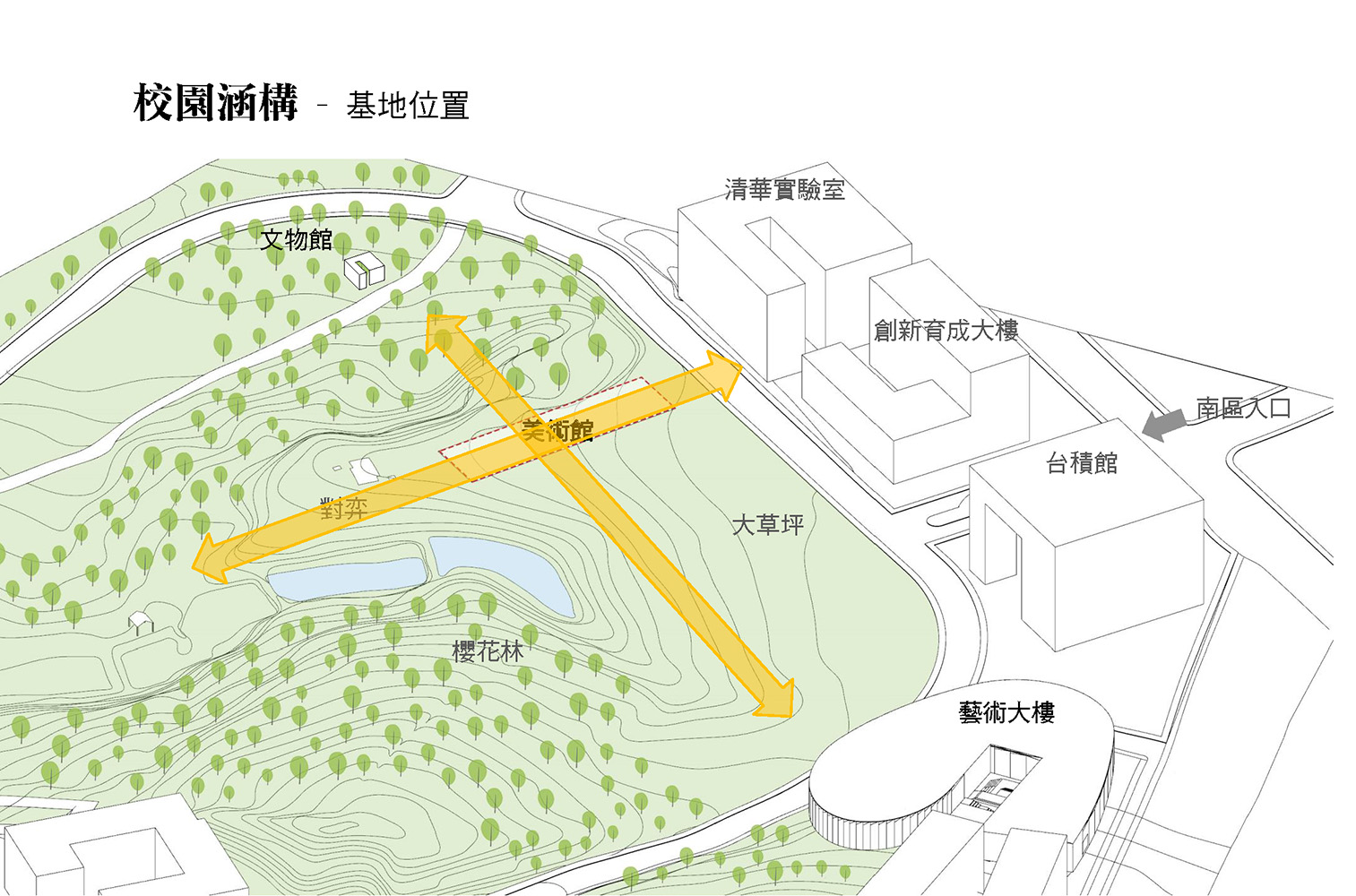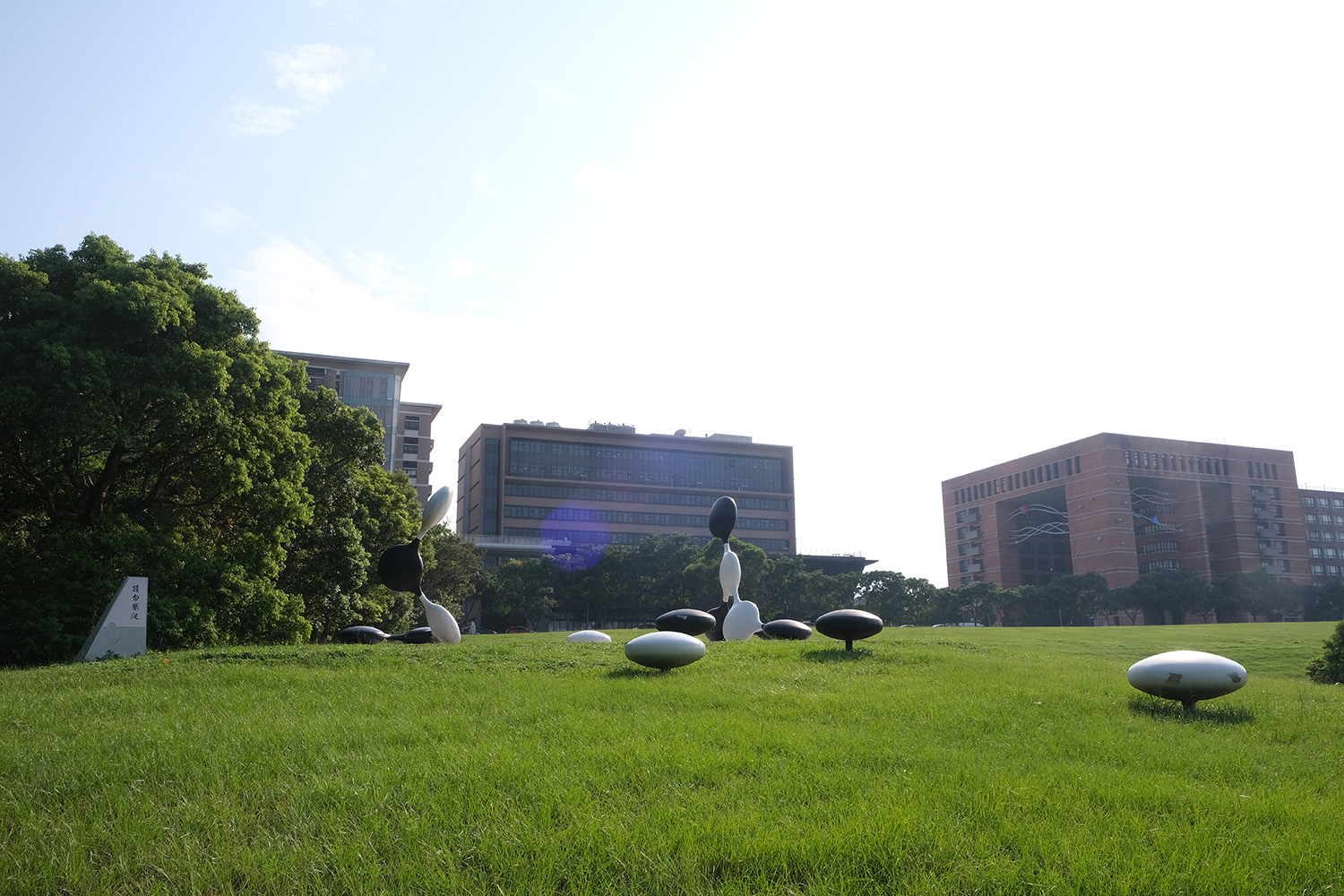十年集夢,清華文藝動起來
A boon to art and literature
回顧清華歷史,早期即有校友集資贈送母校紀念禮的慣例,如1970年代委託知名雕塑藝術家楊英風創作的「昇華」、「鳳凰」,但大多數的贈禮仍以實用性的設備或館舍空間為主。
2010年沈校長捐建奕園計畫的第一塊房角石:奕亭,完工啟用,無獨有偶地,在此之後10年間,清華師長、校友乃至企業界的捐贈,也逐漸由著重實用功能的設備設施,轉為對藝文空間、氛圍的營造。2011年,謝宏亮校友(1973級)捐贈之羅丹「沉思者」銅雕完成安裝揭幕,亦是本校首次列為珍貴動產管理的物件;2015年,蔡進步校友(1981級)捐助母校達1億2,000萬元,卻婉拒工程一館的冠名權,改以捐建藝術雕塑「易‧翼」,作為該館入口意象;2014年,長年對母校事務鼎力襄助的陳繼仁校友(1989級)辭世,其創辦的國碩集團捐贈「堅毅之心」紀念雕塑予清華留念,2019年校慶舉辦雕塑剪綵典禮,當日校慶大會中賀陳弘校長也宣布了一連串捐建計畫,包含:名譽博士王默人及夫人周安儀捐建文學館;中文系教授楊儒賓、方聖平夫婦捐贈畢生珍藏的東亞文物等資料,做為未來文物館典藏核心,由名譽博士曾繁城捐資興建文物館;各界清華人、愛樂人士及聯電集資改建大禮堂為「君山音樂廳」。同年8月,謝宏亮校友再次為清華藝文建設挹注心力,捐建國內頂尖大學中第一座美術館。
為催生文物館,清華企業家協會及百人會多位校友也共襄盛舉,於拍賣會上搶拍捐回楊儒賓教授珍藏之名人文物,同時捐出105萬餘元做為特藏文物發展基金。
在沈校長擔任清華要職期間,也是素以理工聞名的清華更上層樓,開拓藝術、人文領域的階段:推動多元的通識教育課程、人文社會學院的創建……,甚至使曾評論清華是「文化的沙漠,瘋子的樂園」的詩人余光中,於1997年再度到本校演講時大為改觀,讚許清華的蛻變。為感念沈校長對清華的貢獻,本校規劃改建大禮堂為高規格的展演平台,便特以「君山音樂廳」命名。
長期陶冶著清華人的藝文氣息,靜水深流般逐漸顯露其影響力,不知不覺水到渠成,透過各方清華人回饋母校的捐建,為清華的藝文領域累積更多能量。除文學、文物、美術三館外,藝術、教育二學院也將一同座落於南校區,與「對奕‧對藝」、「葉子」(2020年獲文化部第七屆公共藝術獎「藝術創作獎」)二大公共藝術作品比鄰而居。南校區的靜謐蒼翠之中,正蘊積著蓬勃熱鬧的新生氣息。
清華自1911年創校以來,最初50年致力培養溝通東西方文化及推動現代化的優秀人才,可謂「清華1.0」時期,至新竹建校後,1960年代起第二個50年間,從理工出發,逐步擴及人文、商管、生科等領域,造就出多方產業建設的專業人才,邁入「清華2.0」時代。近年面對全球化的挑戰,清華則期許「重新煥發以人為本、培養兼通東西文化與社會關懷的跨域創新領導人才」,作為「清華3.0」教育的努力方向。而透過十年來校園中藝文捐建不斷累積的能量,又增添合校後的新生力軍:教育、藝術二大學院,使得「清華3.0」的願景更趨完備,為此,賀陳弘校長特以「清華文藝復興」,為這一道「文化廊帶」的未來發展命名。
而奕園,起源於一個單純真摯的夢想,寄寓著沈校長浪漫的人文情思,也因緣際會成為了清華文藝復甦之風的起點。期待將有更多浪漫並可付諸實現的夢想從此地孕育而生,生生不息。
A boon to art and literature
Ever since NTHU was established, graduating classes and alumni have been making commemorative gifts to their alma mater, mostly facilities, but occasionally in the form of a work of art. For example, during the 1970s alumni commissioned the prominent sculptor Yuyu Yang to produce a number of sculptures, including Sublimation and Phoenix.
Following Shen's lead, during the past ten years alumni, senior faculty, and corporate sponsors have been making more donations in the form of public art and landscaping. For instance, in 2011 alumnus Hong-liang Hsieh (Physics, 1973) donated a replica of Rodin's sculpture The Thinker (Le Penseur) from his personal collection, which is now one of NTHU's most valuable assets; in 2015 Jin-bu Tsai (Power and Mechanical Engineering, 1981) donated Wings of Change, located at the entrance of Engineering Building I; and in 2019 the Gigastorage Corporation donated the sculpture Dedication, in honor of its founder, Ji-ren Chen (Materials Science and Engineering, 1989), who died in 2014. At the unveiling of Dedication, NTHU president Hong Hocheng announced that major donations have also been pledged for additional projects of a similar nature, including a museum of literature funded by novelist Mo-jen Wang, who was awarded an honorary doctorate by NTHU, and his wife, An-yi Chou; a museum of modern history, with major funding provided by Fan-cheng Tseng, the vice chairman and cofounder of the Taiwan Semiconductor Manufacturing Company (TSMC), and Professor Rur-bin Yang of the Department of Chinese Literature; a collection of items relating to the history of East Asia funded by Professor Rur-bin Yang and his wife, Professor Sheng-ping Fang, of the Center for General Education; and a plan to convert the Main Auditorium into a concert hall, with major funding provided by United Microelectronics Corporation. In 2019 it was also announced that a world-class art museum will soon be built on the south side of campus, with major funding provided by Hong-liang Hsieh.
Substantial support for establishing the museum of modern history has been received from the Tsinghua Entrepreneur Network and the Club 100, whose members purchased at auction a number of cultural relics from Rur-bin Yang's collection, and donated them to NTHU, at the same time raising nearly NT$1 million for building the museum.
It was during Shen's tenure as president that NTHU's strong reputation in science and engineering began to be augmented by achievements in the arts, humanities, and social sciences. The success of his efforts were made apparent in 1997, when the poet Kwang-chung Yu—who once referred to NTHU as a cultural desert—visited the campus and praised its remarkable transformation. In recognition of Shen's many contributions to this transformation, it has been decided to rename the uprgraded Main Auditorium the Chun-shan Concert Hall.
With the long-term support of all segments of the Tsinghua community, NTHU has gradually become a veritable oasis of arts and culture. In addition to the planned museums of literature, history, and art, as a result of the merger with National Hsinchu University of Education (NHCUE), NTHU now has colleges of art and education on the south side of campus, near the works of public art Confrontation, Conversation and Leaf, which won the 2020 recipient of the Ministry of Culture's Public Art Award.
The history of Tsinghua University can be divided into three phases. The first phase began in 1911 with the establishment of Tsinghua College in Beijing, and can be called “Tsinghua 1.0.” During this phase the emphasis was on modernizing China and reducing the culture gap between China and the West. During the second phase, “Tsinghua 2.0,” which began in the 1960s, the two Tsinghuas—one in Beijing and one in Taiwan—developed separately, first emphasizing science and engineering, and later adding departments in other fields. During the third phase, “Tsinghua 3.0,” the emphasis has shifted to educational diversity and interdisciplinary studies and research, with a people-centered institutional culture aimed at turning out graduates who are of noble character and equally at home in both the East and the West. All in all, these developments over the past ten years can be seen as marking the advent of what NTHU president Hong Hocheng sees as a cultural renaissance at NTHU.
When you step outside, stretch out your hand and take in a deep breath, and you'll notice a steady wind carrying the fragrance of art and culture across the NTHU campus. It originated from the Go Garden, the last behest and generous bequest of former NTHU president Chun-shan Shen—a true renaissance man. Now it's up to us to work together to keep that balmy breeze blowing well into the future.


